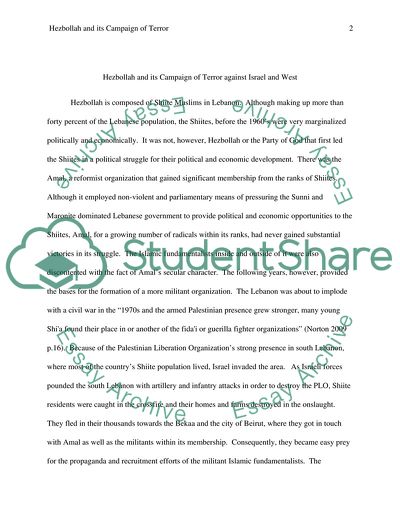Cite this document
(“Hezbollah and its Campaign of Terror against Israel and West Term Paper”, n.d.)
Hezbollah and its Campaign of Terror against Israel and West Term Paper. Retrieved from https://studentshare.org/social-science/1739055-hezbollahs-terrorist-campaign-against-israel-and-the-west
Hezbollah and its Campaign of Terror against Israel and West Term Paper. Retrieved from https://studentshare.org/social-science/1739055-hezbollahs-terrorist-campaign-against-israel-and-the-west
(Hezbollah and Its Campaign of Terror Against Israel and West Term Paper)
Hezbollah and Its Campaign of Terror Against Israel and West Term Paper. https://studentshare.org/social-science/1739055-hezbollahs-terrorist-campaign-against-israel-and-the-west.
Hezbollah and Its Campaign of Terror Against Israel and West Term Paper. https://studentshare.org/social-science/1739055-hezbollahs-terrorist-campaign-against-israel-and-the-west.
“Hezbollah and Its Campaign of Terror Against Israel and West Term Paper”, n.d. https://studentshare.org/social-science/1739055-hezbollahs-terrorist-campaign-against-israel-and-the-west.


